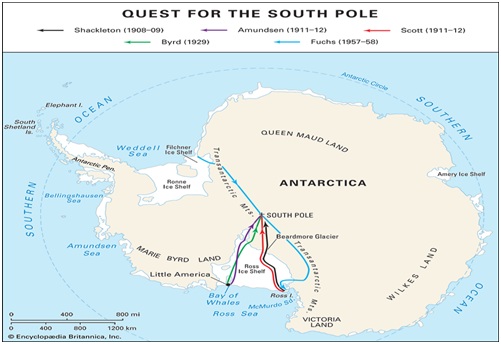First Indian-origin woman to trek solo to South Pole
Recently, Captain Harpreet Chandi, a 32-year-old Indian-origin British Sikh Army officer and physiotherapist, also known as Polar Preet, has created history by becoming the first woman of colour to complete a solo unsupported trek to the South Pole.
Context
Recently, Captain Harpreet Chandi, a 32-year-old Indian-origin British Sikh Army officer and physiotherapist, also known as Polar Preet, has created history by becoming the first woman of colour to complete a solo unsupported trek to the South Pole.
About South Pole
- The South Pole is located on Antarctica, one of the Earth's seven continents.
- It is also known as the Terrestrial South Pole.
- The actual Geographic South Pole is the point at 90 degrees latitude south or simply 90°S,
- The pole is situated about 1,300km (800 miles) inland from the nearest open sea; it is at an altitude of 2,835m (9,300ft) above sea level due to the enormous thickness of the Antarctic ice sheet.
- The bedrock at the pole is thought to actually be about 57m (187ft) below sea level, in part due to the weight of all that ice pushing it down.
Interesting facts
|
Features of South Pole
- At the surface at the South Pole, there is just snow and ice.
- There are no other natural significant features, no mountains sticking through the ice (there are hills and mountains beneath the ice, but they aren't tall enough to reach through) no rock, no solid ground, just a vast endless plateau of more snow and more ice.
Human settlement in South Pole
- A huge human settlement is the Amundsen-Scott South Pole Station.
- This American run scientific station was established in 1956 and has been permanently manned ever since then.
- The current station is the third to be built, work started on it in 2003.
- In addition to the main station building there is a large collection of other structures in the area.
- Some are specifically designed and constructed scientific buildings, others are sturdy insulated tents that are used for temporary summer-only accommodation. There are cabooses or converted shipping containers that are fitted out for a particular purpose or scientific experiment.
From imagination to reality
|


